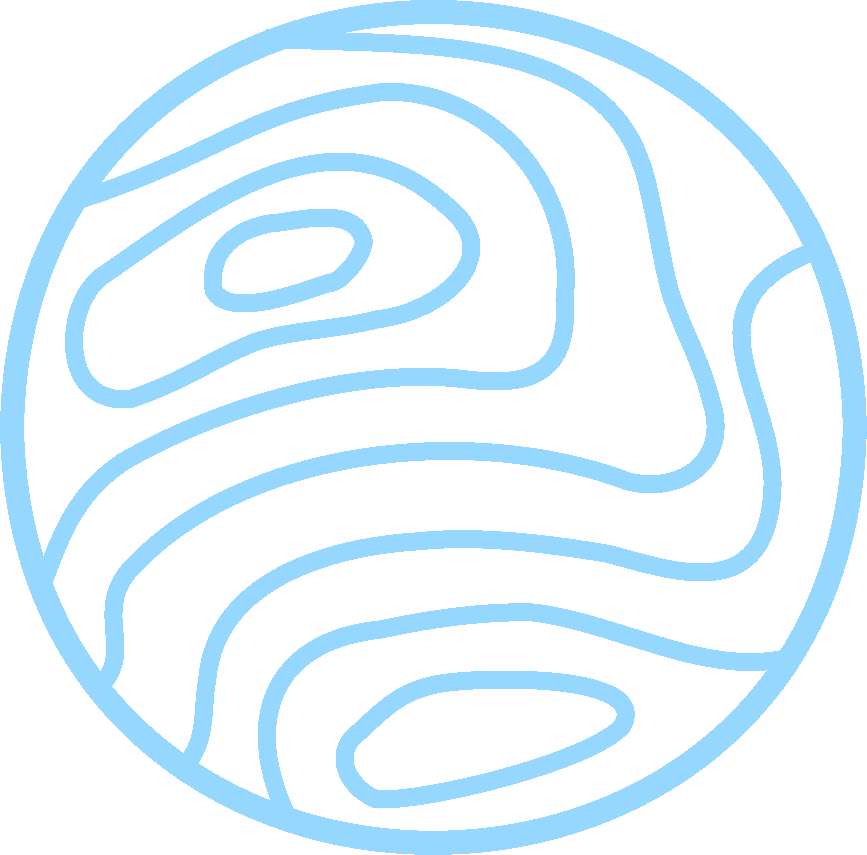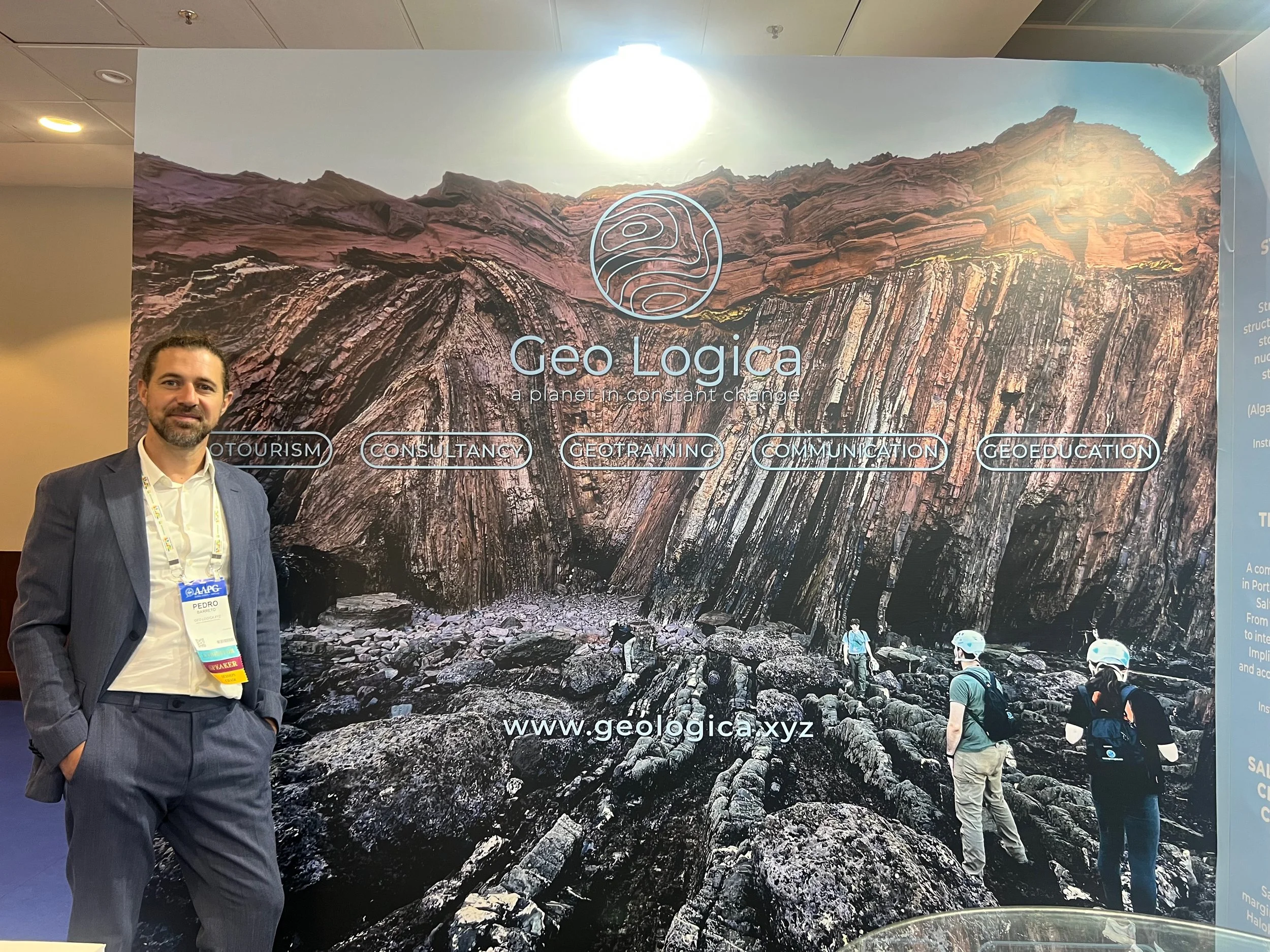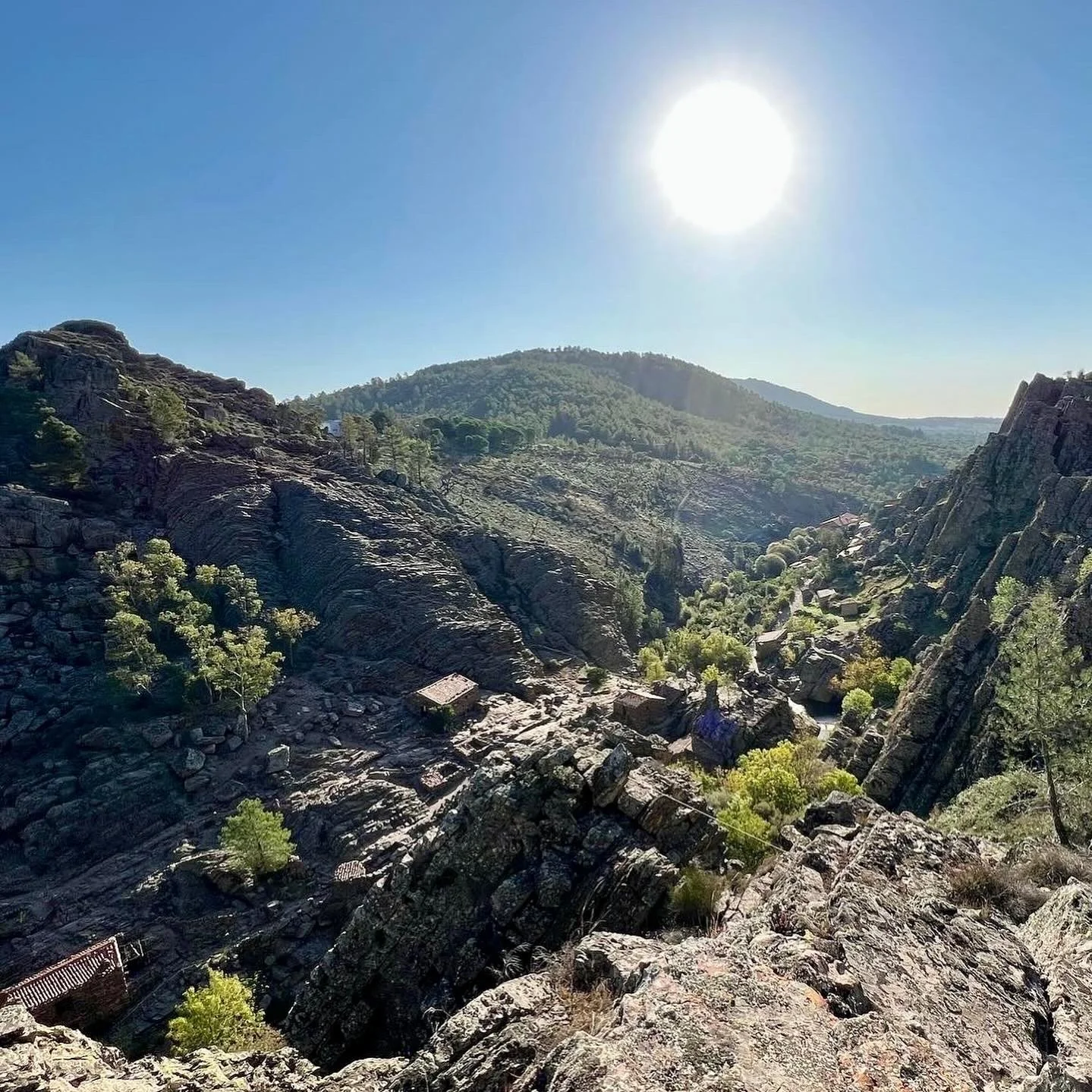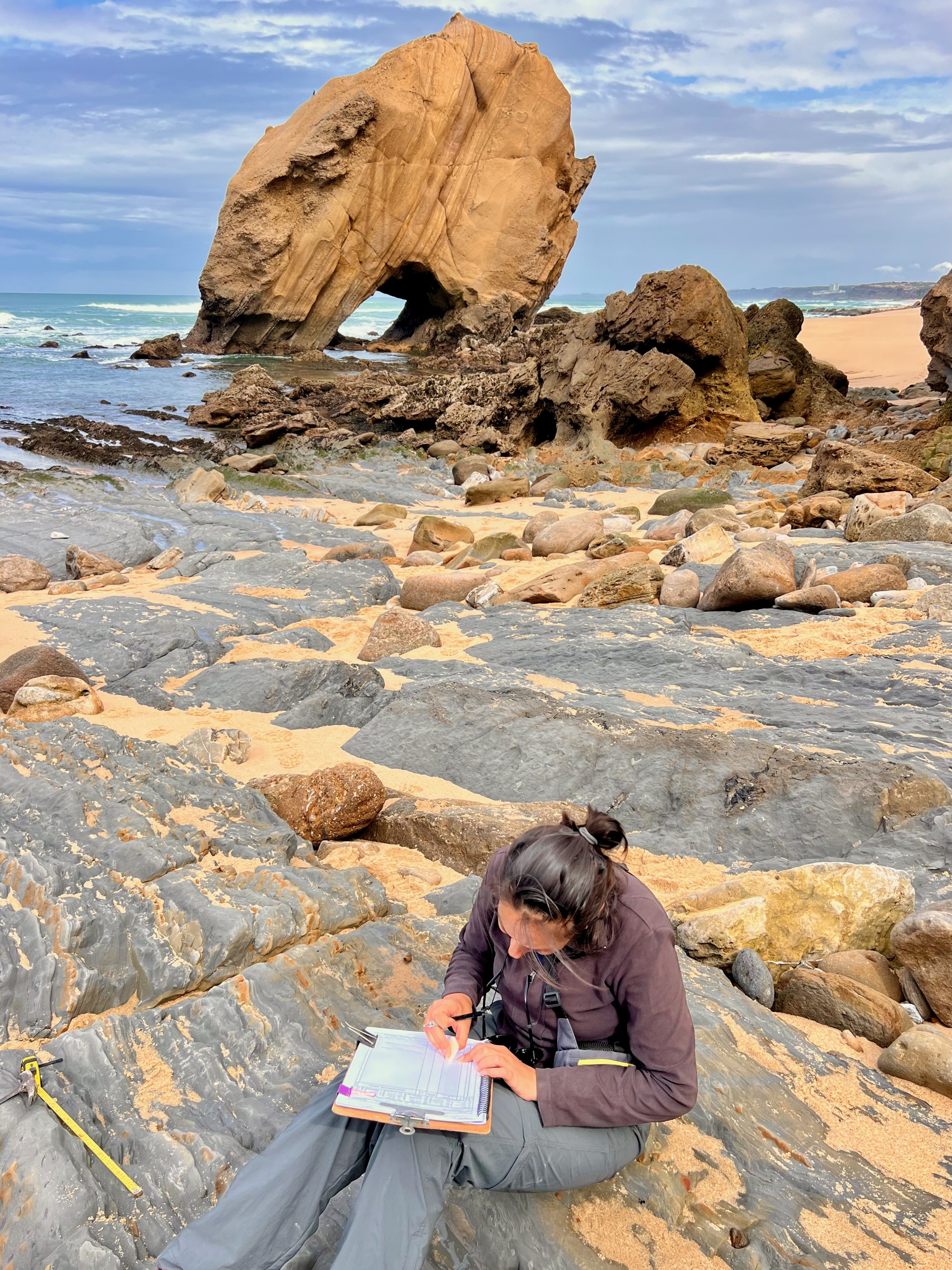Geo Logica was honoured to sponsor the first I Simpósio de Bacias Sedimentares organised this month by the University Federal do Paraná (Brazil).
Surely an important milestone at an exciting time for the Brazilian Geosciences. Congratulations to the organising committee for putting together this successful event.
AAPG ICE Rio 2025
Last month Geo Logica participated in the AAPG ICE 2025 that took place in Rio de Janeiro.
Our booth at the exhibition area presented Geo Logica range of professional field-based training courses and was visited by many past and future clients, partners, long time friends and geoscience students from several Brazilian Universities.
Our founder Pedro Barreto chaired a session on Brazilian Tectonics together with Pedro Arriola and presented ongoing research being developed in collaboration with Deise Silveira from the University of Paraná, regarding Salt Tectonics and Soft Sediment Deformation processes in Santa Cruz Diapir, Lusitanian Basin, Portugal.
After this successful event, there was still time to go to the field and see a planet in constant change while rock climbing the world renowned Pão de Açúcar (Sugar Loaf).
Stay tuned to our media and website for more info on future dates of training courses!
SALT TECTONICS COURSE IN PORTUGAL - EXTENDED EDITION - May 10-17th - FULLY BOOKED
This 8 day field course is an extended version of the already world famous Geo Logica Salt Basins TIG field trip. It focus on the main aspects of salt tectonics, particularly on diapirs and their interplay with sedimentary processes and igneous processes. Focus will be given to the implications on seismic imaging and geological risks associated with drilling salt structures. Participants will observe structural, sedimentary and igneous features that are usually not detectable on seismic data.
Soft-Sediment Deformation and Fluid Escape Features on Upturned Salt-Related Diapir Flanks
Geo Logica in collaboration with clastic sedimentation expert Deise Silveira from the Basin Analysis Research Lab (LABAP) at Federal University of Paraná (Brazil) is studying soft-sediment deformation and fluid escape features on the flanks of the Santa Cruz Diapir (Portugal).
Halokinesis is a process known to promote localised deformation of the sedimentary overburden deposited over and adjacent to salt structures (e.g., pillows, walls, diapirs).
In clastic settings where sediment consolidation rates are typically slow, bedding rotation induced by rapid diapir rise often involves soft-sediment deformation (SSD) and sediment rearrangement during flap development. Consequently, features such as slumps and deformation bands (e.g., granulation seams) are commonly observed, with increasing frequency near the salt diapir.
On the western flank of the Santa Cruz Diapir in the Lusitanian Basin (Portugal), Kimmeridgian-age deltaic fan units exhibit a steep upturned flap geometry. Along this flank, in addition to granulation seams and slumps, several SSD and fluid escape features, such as mega-scale convoluted bedding, and certain sand injectites cut through and intrude the sedimentary sequence. These structures are unevenly distributed along the flank.
Detailed sedimentological and structural fieldwork, complemented by UVA and LiDAR imagery interpretation, is being carried out on the western flank of the Santa Cruz Diapir to investigate the distribution and interrelationship of these structures and understand their origin and triggering mechanisms.
The fluid escape features can alter the permeability and connectivity of the reservoir, influence fluid migration, and affect the understanding of hydrocarbon distribution and storage, while playing a significant role in influencing stratigraphic and structural traps. The findings of this study highlight the importance of investigating and analysing these structures to improve the prediction of reservoir performance and hydrocarbon recovery strategies when modelling reservoirs and seals adjacent to salt diapirs.
These and other features associated with halokinesis are explained in our salt tectonics training course that will take place in October 2025. For more info about this course please visit our GeoTraining page: https://www.geologica.xyz/salt-tig-geo-logica-field-trip-i2
Salt Tectonics in Central Northern Calcareous Alps (Salzburg Region, Austria)
Geo Logica is delighted to announce that is going abroad in 2026 with the first professional training course outside Portugal! In partnership with Oscar Fernandez, we extend our field-based salt tectonics course portfolio to the spectacular Austrian landscape, more specifically to the Central Northern Calcareous Alps, in the Salzburg Region.
Fourth Edition of the Geo Logica Salt Basins Field Trip
Another successful Geo Logica Salt Basins Field Trip took place last week, between Algarve and Lusitanian Basins in Portugal.
The world-class exposures at mines, quarries and coastal outcrops visited allowed participants to consolidate their knowledge of salt deposition processes and tectonic principles and understand its implications on their daily work activities.
At the outcrops we observed how hydrocarbons can be generated and accumulated in and around salt structures, and discuss potential drilling issues and geohazard prediction while working with these structures for energy production and storage.
Many thanks to PETROBRAS PETROLEO BRASILEIRO SA and the Staatstoezicht op de Mijnen (SodM) for the ideas shared during the fourth edition of this comprehensive field-based training course. Special thanks to Ian Davison for joining us again in the field and for helping making this course a world reference in salt tectonics training.
Stay tuned to our media and website for future training courses and activities, or just contact us to tailor-suite a field-based training course for your team.
Related Link: Geo Logica Salt Basins Field Trip
Geo Logica at the "Salt Tectonics for the Energy Transition" Conference
Over the past two days Geo Logica participated in a super concentrated salty conference organized by Gonzalo Zamora Valcarce, Heijn van Gent , Oliver Duffy, Oriol Ferrer, Lorena G Moscardelli and Sian Evans at the Geological Society of London,
We were fascinated to have witness a great selection of talks related to the ultra important role of “salt tectonics in the energy transition”. Also extremelly grateful to have been given the opportunity to contribute as well with one Geo Logica presentation entitled “Understanding the riddles of energy and CO2 geostorage in and around salt structures from field examples in Portugal”
Amazing work is being carried out by this diverse, highly motivated, passionate and super fun group of professionals. Please keep bringing those super saturated and highly heterogeneous range of salty topics!
It was great to catch up with colleagues and friends and to meet new ones, in particular those I have been trying to meet personally for quite a while. Even so, with all the excitement, didn’t manage to meet you all! Need to wait for the next salty gathering!
Many thanks to you all for making these last two days another epic event at The Geological Society of London
Related link: https://www.geolsoc.org.uk/expired/09-Salt-Tectonics-24
Geo Logica Presenting at IMAGE 2024 (Houston)
Geo Logica Managing director Pedro Barreto presented this week at IMAGE 2024 (joint SEG /AAPG) International Meeting of Applied Geosciences & Energy in Houston, Texas, the study entitled “Structural aspects of magmatic rocks: comparison between outcrop and seismic data from central Western Iberian Margin. Relevance for O&G, CCS and Natural Hydrogen.”
This work was developed in conjunction with João Mata (IDL), Tiago Cunha (Integrated Geochemical Interpretation Ltd) Marianne Nuzzo (Integrated Geochemical Interpretation Ltd) and Ricardo Pereira (@GeoBioTec / IDL), as part of a field-based training course that took place last May in Portugal.
More info: https://imageevent.aapg.org/portals/26/abstracts/2024/4100907.pdf
Conjugate Margins Conference 2024 Geo Logica Field Trip
Last weekend we run the joint Conjugate Margins Conference 2024 Geo Logica Field trip entitled “Structural Aspects of Magmatic Rocks: Outcrops Vs seismic and implications on HC potential and CCS”.
On Day 1, we looked at structures associated with intrusive magmatism associated with the Sintra Igneous Complex, around Peninha, Guincho, Cabo da Roca, Praia Grande and Lomba dos Pianos.
On Day 2, we looked into structural styles of extrusions associated to the Lisbon Volcanic Complex, around Anços, Penedo do Lexim and Fanhões.
Many thanks to all the participants and co-instructor Tiago Cunha for the constructive discussions and shared ideas throughout these two days and for making this another epic Geo Logica Field trip.
More info: Geo Logica Training Courses
Geo Logica on the Dutch TV show “Earth Challenge”
Recently, Geo Logica had the pleasure of participating on the Dutch TV show “Earth Challenge” episode 3:
https://npo.nl/start/serie/earth-challenge_1/seizoen-1/leven-op-het-land/afspelen
This is where GeoAdventure meets GeoCommunication! We went after Trilobites of ancient seas at the top of a mountain! It was a great day in the mountains looking for trilobites, abseiling cliffs in the search of their marks left on an ancient seafloor (“Cruziana” trace fossils) and meet fantastic people such as Stephanie and the KRO.NCRV film crew.
Many thanks to Sergio Esperancinha, Joana Rodrigues, Sofia Pereira, Marco Dias and the KRO.NCRV production team for helping putting this amazing day together.
Come with us to discover a planet in constant change!












